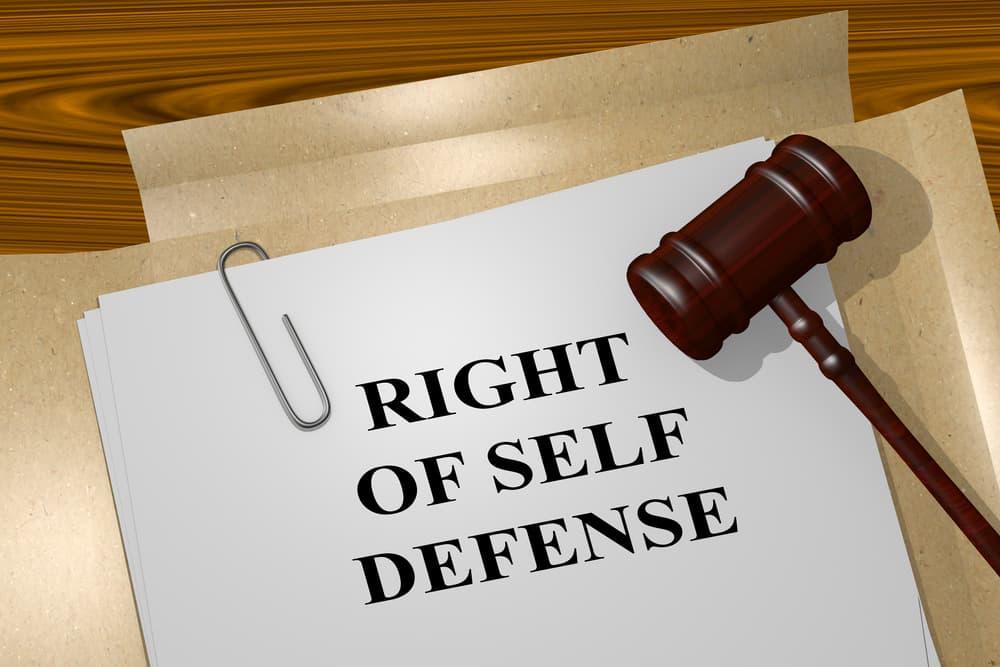Table of Contents
- Defining Self-Defense and Aggression in Legal Terms
- Key Factors That Determine Legal Justification for Self-Defense
- Common Misconceptions That Blur the Line Between Defense and Aggression
- Practical Recommendations for Protecting Your Rights in Confrontational Situations
- To Conclude
Defining Self-Defense and Aggression in Legal Terms
In the realm of law, distinguishing between self-defense and aggression hinges on intent and lawful justification. Self-defense is recognized when an individual responds to an immediate threat with proportionate force to protect themselves or others from harm. This defensive action must be necessary, reasonable, and without malicious intent. The protection extends not only to personal safety but often to property under certain jurisdictions. Key components that courts examine include the presence of imminent danger, the necessity of the response, and whether the force used was excessive or minimal.
On the other hand, aggression denotes an unlawful and proactive use of force that inflicts harm or intimidation without lawful grounds. It is characterized by:
- Intent to initiate conflict or cause injury
- Lack of immediate threat justification
- Disproportionate or excessive use of force
- Violation of the principle of necessity and reasonableness
Key Factors That Determine Legal Justification for Self-Defense
When evaluating whether an act qualifies as self-defense under the law, several critical factors come into play. First and foremost is the presence of imminent threat. The individual claiming self-defense must demonstrate that they faced an immediate danger of harm or unlawful aggression. This threat cannot be speculative or occurring after the fact; it must be ongoing or about to occur. Equally important is the principle of proportionality, meaning the response must be reasonably proportional to the threat posed. Excessive force beyond what is necessary to neutralize the threat can invalidate the claim of self-defense and potentially reclassify the reaction as aggression.
Additionally, the context surrounding the altercation is instrumental. Factors such as whether the defendant had a safe avenue of retreat, the location of the incident (private residence versus public space), and the nature of the initial interaction (whether the defendant instigated the conflict) heavily influence legal interpretations. Courts also consider the defendant’s state of mind – specifically whether there was a genuine and reasonable belief that force was necessary to prevent harm. Understanding these nuances helps clarify why what might appear as identical actions on the surface can lead to drastically different legal outcomes.
- Immediacy of the threat
- Proportionality of the response
- Opportunity to safely retreat
- Role of the parties in initiating conflict
- Reasonable belief of necessity
Common Misconceptions That Blur the Line Between Defense and Aggression
One of the greatest challenges in distinguishing lawful self-defense from unlawful aggression is the widespread misunderstanding about what constitutes a “reasonable” response. Many people believe that any force used in response to a threat is automatically justified, but the law often requires that the reaction be proportionate to the threat faced. Excessive force or continuing to act after the danger has passed can quickly transform a defensive action into an act of aggression. This blurred boundary often stems from a lack of clarity on key legal principles, such as immediacy, proportionality, and the presence of an unavoidable threat.
Another common misconception is the assumption that verbal provocation or threats grant unlimited rights to harmful retaliation. However, self-defense laws typically emphasize that the threat must be imminent and physical, not merely verbal or psychological. It’s important to understand that:
- Self-defense is reactive, not proactive; initiating conflict disqualifies the defense claim.
- Retreat may be required; some jurisdictions expect individuals to avoid confrontation if safely possible.
- The defender bears the burden of proving that their use of force was necessary and reasonable.
These nuances highlight how often public perception clashes with legal standards, underscoring the importance of informed awareness when navigating incidents that involve self-protection versus offensive behavior.
Practical Recommendations for Protecting Your Rights in Confrontational Situations
When faced with a confrontational situation, it’s essential to remain calm and assess the circumstances carefully before taking any action. Protecting your rights legally involves knowing the boundary between self-defense and aggression, which is often defined by intent and proportionality. Always respond with the minimum force necessary to neutralize the threat. Overstepping this can transform your justified defense into an act of aggression, which can have severe legal consequences. Remember, retreat is preferable if it’s safe and feasible – using force as a last resort strengthens your position in any legal review.
To safeguard yourself effectively, consider these key strategies:
- Document the incident: Record details immediately after the event, including what happened, the other party’s behavior, and any witnesses present.
- Know your local laws: Legal definitions and thresholds for self-defense can vary widely by jurisdiction.
- Communicate clearly: If possible, issue verbal warnings to show you do not seek conflict.
- Seek legal advice promptly: Consult with a qualified attorney to understand your rights and the best course of action following an altercation.
To Conclude
In conclusion, distinguishing between self-defense and aggression is crucial not only for legal clarity but also for personal safety and ethical responsibility. Understanding the nuances in how the law interprets these actions can empower individuals to protect themselves within the bounds of legality, while also respecting the rights of others. As legal standards vary by jurisdiction, staying informed and seeking professional advice when faced with such situations is always wise. Ultimately, a well-grounded comprehension of these concepts helps foster safer communities and more just outcomes when conflicts arise.Check Our Other Blogs
- StunGun – Your Trusted Source for Stun Guns, Laws, and Self-Defense Tips
- PepperSprayLaws – Your Trusted Resource for Pepper Spray Information
- StunGunLaws – Your Trusted Guide to Stun Gun Legality and Safety




